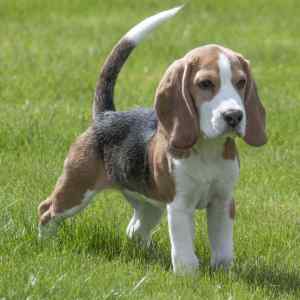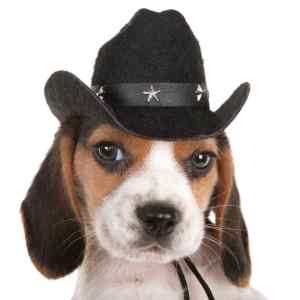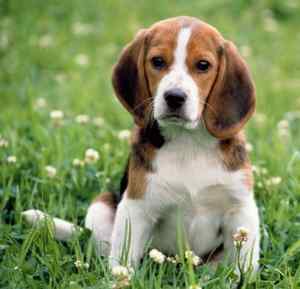Welcome to the comprehensive guide to the beloved Beagle, a dog breed that has captured hearts with its boundless energy, melodious howls, and expressive brown eyes.
If you’re considering bringing one of these joyful companions into your life or are simply a fan of this endearing breed, you’ve come to the right place. This in-depth examination covers every aspect of the Beagle, from the tip of its wagging tail to its keenly sniffing nose.
Delve into fascinating facts about the Beagle’s history, which dates back to the Roman times and has evolved through centuries to become the modern, amiable hound we adore. Learn about the breed’s expected lifespan, typically ranging from 12 to 15 years, and the factors that can influence it.
Discover the price spectrum for a Beagle puppy, which can vary widely based on lineage and location, and gain insight into the initial and ongoing costs of Beagle ownership. The Beagle’s temperament is a delightful blend of curiosity, friendliness, and loyalty, making it an ideal family pet that thrives on companionship and playtime.
However, their strong instinct to follow their noses can lead to adventuresome escapades. This guide provides a window into the Beagle’s behavioral patterns and offers advice on training and socialization to ensure a well-adjusted, obedient dog.
Health is a crucial factor for any breed, and Beagles are no exception. Our guide addresses common health concerns specific to the breed, such as obesity, ear infections, and hereditary conditions like epilepsy. You’ll find tips on preventative care, nutrition, exercise, and how to spot early signs of potential health issues. The care section also covers grooming needs, shedding, and the importance of regular veterinary check-ups.
In terms of appearance, the Beagle is a sturdy, compact hound, known for its tri-color coat, although they come in a variety of beautiful shades and patterns. Our guide features a gallery of photos showcasing the Beagle in all its splendor, alongside detailed information on breed standards and the variety of looks within the breed.
But what’s in a name? Plenty, when it comes to personalizing your bond with your Beagle. We’ve compiled a list of creative and popular names for Beagle dogs and puppies, inspired by their characteristics, historical figures, and more.
In addition to the main guide, you’ll find articles that dive into specific topics related to Beagles, offering a well-rounded view of what life with one of these charming dogs entails. Whether you’re a seasoned Beagle owner or new to the breed, this guide is an invaluable resource for understanding and appreciating these delightful dogs.
All About Beagles
Frequently featured in various films and TV series such as “Shiloh,” “Cats and Dogs,” and “Underdog,” the Beagle has long been cherished in American pop culture. Arguably the most famous Beagle to ever capture hearts worldwide is “Snoopy” from the beloved Peanuts comic strip.
Beagle Facts
Size: Standard size only, though there are also individuals out there, known as Pocket Beagles
Color: All the known hound colors and varieties
Height: 15 inches or less at the shoulder
Weight: 18-25 pounds on average
Exercise Needs: Demanding
Grooming Demands: Minimal
Life Expectancy: 12-14 years
Good With Kids: Yes
Good with Pets?: With caution – see below.
Ease of Training: Medium Difficult
Misspelled Names: Beegle, Beagel, Beegel
Breed Group USA: Hound
Beagle History
Like so many other dogs, the history of the Beagle has been obscured by the hands of time, leaving many to speculate and guess as to the origins of this magnificent canine. Records of keen sight and scent hounds have been found to predate even the Roman Empire and it is believed that the wonderful little Beagle may have dated as far back or, at the very least, is descended from these noble dogs.
It is known that this breed was firmly established prior to the 18th century and, in fact, it was by cross-breeding the Beagle with a buck hound that they came by the popular Foxhounds, which were used for pack hunting.
From this cross, two separate varieties of dog were developed, one of which was known as the Southern Hound and the other which became the North Country Beagle.
Meanwhile, hunters in the United States were relying upon Dachshunds and Bassets for their canine needs. While quick and seemingly tireless, these dogs were not a suitable type for their job. In 1860, the European dogs would be introduced to the line and it would succeed in combining the tenacious qualities of the American Beagle with the beautiful type and correctness of the European strain. By 1888, the National Beagle Club was formed and the Beagles have been an American favorite ever since.
Beagle Appearance
One of the most distinctive breeds of dog in the world, the Beagle appears to best resemble a miniature Foxhound, though he is a solid and sturdily built dog for his short height. Shown in two classes, 13-15 inches and the 13 inches and under divisions, he is still a very big and powerful dog for his little size.
Possessing an incredible amount of stamina and speed, he is more than capable of driving his quarry to the trees, the ground, or to the death if need be.
Beagles come in all the regular hound colors, which means they can be black and tan, black tan and blue tick, black tan and white, black tan and redtick, blue tan and white, tan and white, black red and white, brown and white, red and white, lemon and white, black and white, black, black fawn and white, blue, blue and white, lemon, brown, red, tan, or even white.
In addition to this diverse color variety, they can also be ticked, spotted, or can have black, brown, tan, or white markings. In a nutshell, the Beagle can come in just about any color and style you can imagine.
Beagle Temperament
The Beagle dog is a popular dog breed with a tendency to be loving and good natured if given proper training and socialization. If you have kids, you may be considering adding a Beagle to your family. Is the Beagle a child friendly dog?
Although Beagles love interacting with children and are quite playful and tolerant of the antics of a child, caution may be in order if you have children younger than age six. In order for a Beagle dog to interact safely with a small child, he needs to understand that the child ranks above him in the pack hierarchy.
This is sometimes difficult to reinforce in the case of a young child since they are of such small stature, the Beagle may continually challenge them for pack position. The normally child friendly Beagle may exert signs of dominance and even aggression if left alone with a small child they consider small and non-threatening.
The normally gregarious, affectionate Beagle may become a less child friendly dog when it comes to the issue of food. Beagles love food and have a very advanced sense of smell due to their scent tracking skills. If a small child whom a Beagle considers to be non-threatening playfully reaches for his food, the dog may respond with aggressive action such as biting which could cause serious injury to a small child.
Once a child reaches the age of seven or eight, a Beagle can be an excellent pet. Energetic and curious, a Beagle is the ideal dog to form a strong bond with an active and inquisitive child. Once the pack hierarchy is established and the child is deemed to be a higher up pack member,
Beagles can be a remarkably child friendly dog who is both gentle and tolerant. It\’s important that the child be taught how to respect the Beagle dog and not pull at his ears or aggravate him repeatedly as Beagles will sometimes snap as a protective mechanism if he feels threatened.
Many of the problems associated with the interaction between children and Beagles can be solved by early training and by exposing the dog to children at a young age. Children should also be taught to interact effectively with the Beagle. In addition to being taught not to taunt the Beagle with food, they should learn to keep doors and fence gates closed as Beagles are natural wanderers and can quickly escape if they detect a scent worth tracking.
By undertaking early training and adopting a Beagle only after the children reach a certain age, the happy-go-lucky, good natured Beagle can be a very child friendly dog and a real asset to the family.
Beagle Exercise Info
While most tend to see the hound as a lazy dog, envisioning old-time Plantation movies with lazy loafers lounging on the porch, the Beagle is anything but lazy and inactive.
In fact, quite the opposite is true – a very active and enthusiastic individual, he will tirelessly play fetch, tug of war, and \’hound\’ the cat until there is no tomorrow. If not kept busy enough, he will even turn to your shoes or the furniture as a source of amusement – and that\’s never a good thing.
It\’s very important to remember that this particular breed has been bred, for centuries, to hunt down their quarry and chase after them as long as the prey will run. Even when not hunting, they are a very active, very high exercise individual.
At the very least, the Beagle needs several long brisk walks a day or a chance to run off steam within a fenced-in area. Never, however, let your Beagle off the leash unless he\’s in an enclosure and supervised – Beagles are notorious for \”catching a scent\” and running off, often ignoring cars and other dangers.
Beagle Grooming Info
Grooming the Beagle is relatively easy – a good brushing with a soft bristled brush will take care of any of those itchy spots, as well as loosening up any dander or loose fur, and a bath once or twice a month will keep your Beagle\’s coat simply glowing.
Keeping the toenails trimmed short will help to prevent sore paws, as well as risking them catching them on the carpet, and the Beagle, like any floppy-eared dog, should have his ears checked regularly for any signs of dirt or infection.
Beagle Training Info
If you are challenged with the task of training a Beagle, be ready to put your patience to the test. Fun-loving and stubborn as a bull, most Beagles simply can\’t be bothered with learning tricks and such mundane tasks as lay down and roll over.
Lay down? Shyeah-right – only after he\’s finished making the cat run for cover and making sure there isn\’t a bird traipsing about in his back yard. If you want to train a Beagle, chances are it will all come down to a battle of wits.
In order to train one of these rebels, you will want to use a technique known as \”positive reinforcement.\” This means that, rather than scolding your dog when he does something you don\’t like, you simply ignore him and, when he does something that you want, you reward him with a treat and lots of excitement, happiness, and praise.
Making a big production of the desired behavior encourages your Beagle to continue doing this action in hopes of getting more goodies and attention.
Beagle Health Info
Beagle Dogs can be prone to certain hereditary health problems. That is why choosing a responsible breeder from which to purchase your Beagle puppy is very important. Responsible Beagle breeders will be well educated about the breed and carefully screen their breeding dogs for disorders that can affect these dogs.
Some health issues that may affect the Beagle include, but are not limited to:
- Patellar luxation
- Hypothyroidism
- Intervertebral disc disease
- Epilepsy
Is the Beagle Dog Breed Right For You?
While films like \”Shiloh\” endear the Beagle to us, and he is known as a wonderful family dog, it doesn\’t necessarily mean that the Beagle puppy that you\’re so fixated on is the right dog for you. Before considering a pile of cute Beagle puppies, take a few moments to answer whether or not that the Beagle is the right breed for you – notoriously noisy, they can be extremely vocal and are not well-suited for apartment living.
Moreover, the Beagle is known for its heavy shedding, which is something to consider if you prefer a meticulous and tidy environment. In addition, Beagles have a strong instinct to run and are not reliable when let off their leash. This trait can pose challenges, especially for individuals who lack the time or capability to cater to the breed’s requirement for vigorous exercise.
There are bonuses to the Beagle, however. They are generally a very healthy and hearty breed, and have a great friendly love for children. The Beagle can make the perfect pet for the right family.
A note on “Pocket Beagles” and “Teacup Beagles” however!
Be very wary of what is known as the Pocket Beagle or Teacup Beagle, as these can prove to either be dwarf specimens, the results of heavy inbreeding (with lots of health problems) or can be the offspring of Beagles crossed with toy terriers. Always do your research and purchase a Beagle only from a responsible, knowledgeable breeder in whom you can place your trust.
More Information about the Beagle Dog Breed
Questions and Answers About Beagles
Is a Beagle a good house dog?
Beagles are a popular breed for household pets, and for good reason. Their compact size and short, low-maintenance coat make them conveniently suited for indoor living. Originally bred as scent hounds for hunting small game,
Beagles are energetic and require regular exercise, but their adaptability allows them to thrive in a home environment as long as their physical activity needs are met. With their friendly demeanor and sociable nature, they tend to get along well with children and other pets, making them excellent family dogs. Beagles are also known for their intelligence and curiosity, which can make training a fun and rewarding experience for both the dog and its owner.
However, potential Beagle owners should be aware of certain characteristics inherent to the breed that might pose challenges in a household setting. Beagles are known for their loud and distinctive bark, or bay, which they can use liberally if not properly trained. This can be an issue in densely populated neighborhoods or shared living spaces such as apartment complexes.
Furthermore, their strong hunting instincts drive them to follow their noses, which can lead to stubbornness and a propensity to wander off if they catch an interesting scent. This makes it essential for Beagle owners to have a secure, fenced-in yard or to keep their pets leashed when outside. Their inquisitive nature also means they can get into mischief if left unsupervised, so it’s important to provide them with plenty of toys and mental stimulation to keep them occupied.
Overall, a Beagle can be a wonderful house dog if their owners are prepared to meet their needs. Consistent training, plenty of exercises, and a secure environment will help channel a Beagle’s energy and natural instincts in positive ways. Their loyalty, affectionate nature, and joyous spirits can bring a lot of love and laughter to a home.
With the right care and attention, a Beagle can not only adapt to living in a house but can also become an irreplaceable member of the family. Like any breed, understanding and accommodating the specific traits of Beagles will go a long way in fostering a harmonious and happy relationship between pet and owner.
Are Beagles high anxiety?
Beagles, a breed known for their keen sense of smell and tracking ability, are generally friendly and good-natured dogs. Despite their cheerful disposition, Beagles can exhibit signs of anxiety under certain circumstances.
Like any other breed, individual personality, life experiences, and genetics play a significant role in determining a Beagle’s propensity for anxiety. Their background as hunting dogs often means they are happiest when they have a task or job to do, and without proper stimulation, they may become anxious or exhibit destructive behaviors.
The most common forms of anxiety in Beagles include separation anxiety, noise anxiety, and general anxiety. Separation anxiety is prevalent in the breed due to their pack-oriented nature; Beagles can become distressed when left alone for extended periods, leading to behaviors such as excessive barking, chewing, or attempts to escape.
Noise anxiety can also be an issue, with some Beagles showing extreme fear during thunderstorms, fireworks, or other loud noises. General anxiety, which might be less specific or triggered by various changes in their environment, can also affect Beagles, causing them to appear nervous or fearful in new or unpredictable situations.
To help manage anxiety in Beagles, it is crucial to provide them with a structured environment, regular exercise, mental stimulation, and training. Consistent daily routines, coupled with positive reinforcement training techniques, can help instill confidence and reduce stress.
Socializing Beagles from a young age can also help to prevent anxiety by exposing them to different situations, people, and other animals in a controlled and positive manner. For Beagles with severe anxiety issues, professional guidance from a veterinarian or a certified animal behaviorist may be necessary. In some cases, medication or natural supplements may be recommended alongside behavioral modification techniques to help manage the dog’s anxiety.




